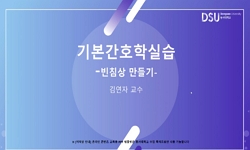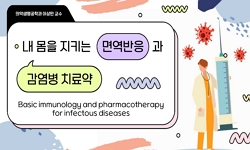목적 : 인공관절 수술 후 감염이 발생하면 치료가 어려워 장기간의 항생제 치료를 필요로 하기도 하고, 심한 경우 인공관절을 제거해야 되는 심각한 합병증을 초래할 수 있어 수술 후 감염의...
http://chineseinput.net/에서 pinyin(병음)방식으로 중국어를 변환할 수 있습니다.
변환된 중국어를 복사하여 사용하시면 됩니다.
- 中文 을 입력하시려면 zhongwen을 입력하시고 space를누르시면됩니다.
- 北京 을 입력하시려면 beijing을 입력하시고 space를 누르시면 됩니다.
인공관절 대치수술 후 감염 양상과 위험인자 = Clinical Presentation and Risk Factors for Prosthetic Joint Related Infections
한글로보기https://www.riss.kr/link?id=A40053485
- 저자
- 발행기관
- 학술지명
- 권호사항
-
발행연도
1999
-
작성언어
Korean
- 주제어
-
KDC
510.000
-
자료형태
학술저널
- 발행기관 URL
-
수록면
211-220(10쪽)
- 제공처
-
0
상세조회 -
0
다운로드
부가정보
국문 초록 (Abstract)
목적 : 인공관절 수술 후 감염이 발생하면 치료가 어려워 장기간의 항생제 치료를 필요로 하기도 하고, 심한 경우 인공관절을 제거해야 되는 심각한 합병증을 초래할 수 있어 수술 후 감염의 예방이 무엇보다 중요하나 수술 후 감염증의 빈도 및 이에 영향을 미치는 위험 요인에 대한 국내 연구가 많지 않다. 이에 저자들은 인공관절 대치수술 후 인공관절 감염의 발생 빈도와 임상상, 감염의 위험인자, 예방적 항생제 사용 현황을 알아보고 수술후 감염예방을 위한 방법을 고안하기 위해 본 연구를 수행하였다.
방법 : 1994년 3월부터 1997년 2월가지 고려대학교 구로병원에서 인공 고관절 대치술이나 인공 슬관절 대치술을 시술받은 206명의 환자를 대상으로 의무기록 검색을 통하여 수술 후 감염이 발생한 환자군과 감염이 발생하지 않은 환자군을 비교하였다.
인공관절의 감염이 있었던 환자들을 대상으로 감염의 발생빈도, 임상 증상, 원인균, 항생제 사용기간, 치료 및 예후를 조사하였고, 감염 위험을 증가시키는 인자에 대한 통계분석을 시행하였다.
결과 : 206명의 환자 중 감염에 이환된 환자는 22명으로 수술 후 감염률은 10.6%이었으며, 인공 슬관절 수술을 받은 환자의 20.8%(11명/53명)에서, 인공 고관절 수술을 받은 환자의 7.2%(11명/206명)에서 감염이 발생하였다. 인공관절 수술 후 감염이 발생한 환자는 주로 수술부위의 동통과 국소 발열을 호소하였으며 급성, 선도형 감염이 많았고 원인균은 S. epidermidis와 S. aureus가 가장 많았다. 예방적 항균제는 주로 2, 3세대 cephalosporin과 aminoglycosides를 병합하여 2주 이상 사용하였고 항균제 사용 기간은 감염이 발생한 군에서 통계적으로 유의하게 길었다. 대부분 항균제와 배농요법으로 치료되었으나 two stage revision이 필요한 경우도 적지 않았다. 감염 발생의 위험요인으로는 비만과 장기간의 예방적 항균제의 사용 등이었다.
결론 : 가장 중요한 감염 발생의 위험요인은 비만과 장기간의 예방적 항균제의 사용이며, 수술 후 감염을 줄이기 위해 첫째, 수술 대상 환자 중 특히 비만환자에서 감염에 대한 주의를 기울여야 하고 둘째, 수술 전 다른 부위의 감염 병소를 적극적으로 제거하며 셋째, 적절한 예방적 항균제를 선택하여 단기간 동안 사용해야 하겠다.
다국어 초록 (Multilingual Abstract)
Background : Prosthetic joint related infections are major complication of prosthesis replacement operations, and require prolonged antibiotic therapy and removal of the infected joint. But there have been few studies regarding their incidence and ris...
Background : Prosthetic joint related infections are major complication of prosthesis replacement operations, and require prolonged antibiotic therapy and removal of the infected joint. But there have been few studies regarding their incidence and risk factors of prosthesis-related infection in Korea. The purpose of this study is to determine the infection rates, clinical presentation, the risk factors as well as the current patterns of prophylactic antibiotic use following prosthetic joint surgery.
Methods : We retrospectively reviewed 206 cases of total hip and total knee replacement(from March 1994 to February 1997) in Korea University Guro Hospital. We evaluated that the clinical manifestation and risk factors, causative organisms, duration of prophylactic antibiotic therapy, treatment modality and prognosis of infected group compared with control group.
Results : Among 153 total hip and 53 total knee replacement surgery, 22 prosthetic joints were infected(10.6%). Infection rate was 7.2%(11/206) in total hip and 20.8%(11/53) in total knee replaced group, respectively. Common symptoms were pain, heating and tenderness of operation sites. Acute, introduced infection was the most common pattern and S. epidermidis and S.aureus were the predominant causative organisms. Two-weeks use of 2nd or 3rd cephalosporin with aminoglycosides were common prophylactic antibiotic regimens. Duration of antibiotic use of infected group was significantly longer than that of non-infected group(28.4 vs 13.4 days). Most patients were successfully treated by antibiotics with drainage but some needed two stage revision. Risk factors of infection were obesity and prolonged use of prophylactic antibiotics in multivariate analysis.
Conclusion : Obesity and prolonged use of antibiotics were significantly related to prosthesis-related infections. For reducing the rate of infection, it can be recommended as follows : be careful in patient selection, especially for a obese patient, remove the remote infection, and use the proper prophylactic antibiotics.
동일학술지(권/호) 다른 논문
-
일개 대학병원에서 6년간 항생제 사용량과 항생제 내성균주 발생율의 관련성에 관한 연구
- 대한화학요법학회
- 박기호
- 1999
-
만성 폐질환의 급성 악화에 대한 Cefetamet pivoxil의 효과
- 대한화학요법학회
- 박재민
- 1999
-
한천희석법을 이용한 Candida species의 fluconazole 내성선별
- 대한화학요법학회
- 신종희
- 1999
-
- 대한화학요법학회
- 정숙인
- 1999




 RISS
RISS






